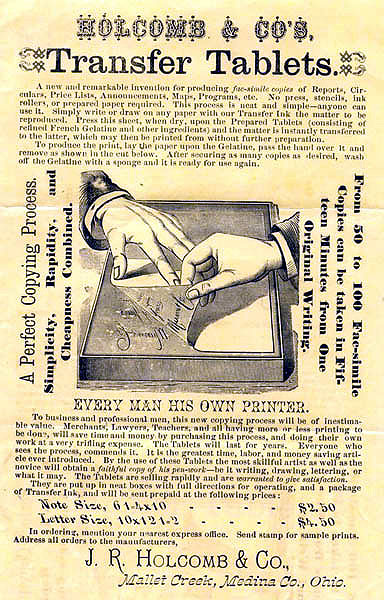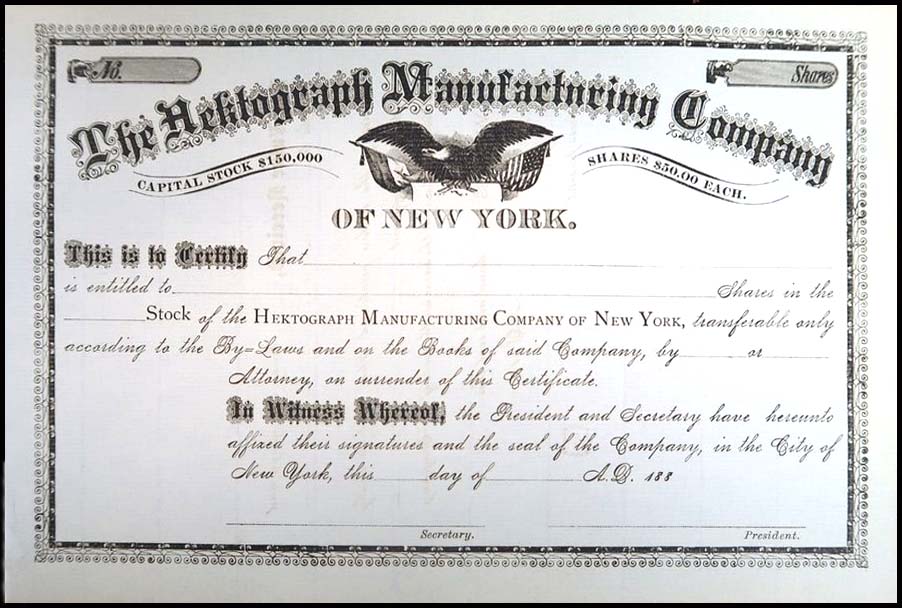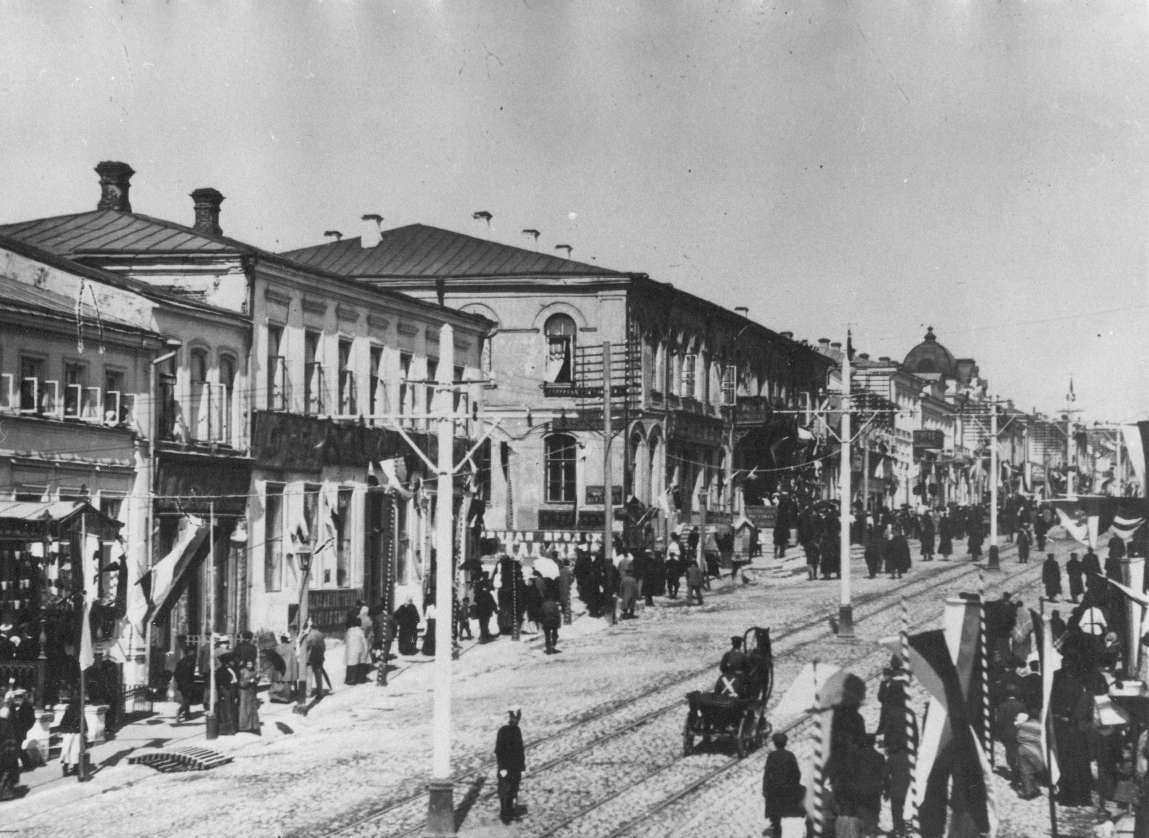|
Yevgeni Preobrazhensky
Yevgeni Alekseyevich Preobrazhensky ( rus, ąĢą▓ą│ąĄ╠üąĮąĖą╣ ąÉą╗ąĄą║čüąĄ╠üąĄą▓ąĖčć ą¤čĆąĄąŠą▒čĆą░ąČąĄ╠üąĮčüą║ąĖą╣, p=j╔¬v╦ł╔Ī╩▓en╩▓╔¬j ╔Él╩▓╔¬k╦łs╩▓ej╔¬v╩▓╔¬t╔Ģ pr╩▓╔¬╔Öbr╔É╦ł╩É╔ønsk╩▓╔¬j; ŌĆō 13 February 1937) was a Russian revolutionary, Soviet politician, and Marxist economist. His main contribution to Marxist theory is the concept of " primitive socialist accumulation", which holds that industrialization in an underdeveloped and agrarian economy such as Russia's in 1917 must rely on the squeezing of agriculture, for example by the socialist state buying agricultural goods at low prices and selling back industrial goods at high prices. Preobrazhensky joined the Russian Social Democratic Labor Party in 1903, and after the establishment of Soviet Russia became a party secretary and member of the Central Committee in 1920. During the 1920s, he opposed Joseph Stalin's bureaucratization and centralization of the party and advocacy of " socialism in one country", becoming linked to ... [...More Info...] [...Related Items...] OR: [Wikipedia] [Google] [Baidu] |
9th Politburo And The 9th Secretariat Of The Russian Communist Party (Bolsheviks)
The Politburo, Secretariat and Orgburo of the 9th Congress of the Russian Communist Party (Bolsheviks) were elected by the 1st Plenary Session of the 9th Central Committee, in the immediate aftermath of the 9th Congress. 9th Politburo 9th Secretariat 9th Orgburo Full members Candidate members References {{Communist Party of the Soviet Union Politburo of the 9th Congress of the Russian Communist Party (Bolsheviks) Secretariat of the 9th Congress of the Russian Communist Party (Bolsheviks) Orgburo of the 9th Congress of the Russian Communist Party (Bolsheviks) ... [...More Info...] [...Related Items...] OR: [Wikipedia] [Google] [Baidu] |
Socialist-Revolutionary Party
The Socialist Revolutionary Party (SR; ,, ) was a major socialist political party in the late Russian Empire, during both phases of the Russian Revolution, and in early Soviet Russia. The party members were known as Esers (). The SRs were agrarian socialists and supporters of a democratic socialist Russian republic. The ideological heirs of the Narodniks, the SRs won a mass following among the Russian peasantry by endorsing the overthrow of the Tsar and the redistribution of land to the peasants. The SRs boycotted the elections to the First Duma following the Revolution of 1905 alongside the Russian Social Democratic Labour Party, but chose to run in the elections to the Second Duma and received the majority of the few seats allotted to the peasantry. Following the 1907 coup, the SRs boycotted all subsequent Dumas until the fall of the Tsar in the February Revolution of March 1917. Controversially, the party leadership endorsed the Russian Provisional Government and partic ... [...More Info...] [...Related Items...] OR: [Wikipedia] [Google] [Baidu] |
1876 Transfer-Tablet-Hektograph-Holcomb 1
Events January * January 1 ** The Reichsbank opens in Berlin. ** The Bass Brewery Red Triangle becomes the world's first registered trademark symbol. *January 27 ŌĆō The Northampton Bank robbery occurs in Massachusetts. February * February 2 ** The National League (baseball), National League of Professional Base Ball Clubs is formed at a meeting in Chicago; it replaces the National Association of Professional Base Ball Players. Morgan Bulkeley of the Hartford Dark Blues is selected as the league's first president. ** Third Carlist War (Spain): Battle of Montejurra – The new commander General Fernando Primo de Rivera marches on the remaining Carlist stronghold at Estella-Lizarra, Estella, where he meets a force of about 1,600 men under General Carlos Calder├│n, at nearby Montejurra. After a courageous and costly defence, Calder├│n is forced to withdraw. * February 14 – Alexander Graham Bell applies for a U.S. patent for the telephone, as does Elisha Gray. * Februa ... [...More Info...] [...Related Items...] OR: [Wikipedia] [Google] [Baidu] |
Tsarism
Tsarist autocracy (), also called Tsarism, was an autocracy, a form of absolute monarchy in the Grand Duchy of Moscow and its successor states, the Tsardom of Russia and the Russian Empire. In it, the Tsar possessed in principle authority and wealth, with more power than constitutional monarchs counterbalanced by legislative authority, as well as a more religious authority than Western monarchs. The institution originated during the time of Ivan III (1462ŌłÆ1505) and was limited with the introduction of constitution and national-level representative assembly (State Duma) after the 1905 Revolution. Still, the term continued to be applied to the monarchy in Russia until the Russian Revolution of 1917 by Russian revolutionaries and afterwards, in the Soviet Union. History Ivan III (reigned 1462ŌĆō1505) built upon Byzantine traditions and laid foundations for the tsarist autocracy which with some variations would govern Russia for centuries.Peter Truscott, ''Russia First: Bre ... [...More Info...] [...Related Items...] OR: [Wikipedia] [Google] [Baidu] |
Hectograph
The hectograph, gelatin duplicator or jellygraph is a printing process that involves transfer of an original, prepared with special inks, to a pan of gelatin or a gelatin pad pulled tight on a metal frame. While the original use of the technology has diminished, it has recently been revived for use in the art world. The hectograph has been modernized and made practical for anyone to use. Process The special aniline dyes for making the master image came in the form of ink or in pens, pencils, carbon paper, and even typewriter ribbon. Hectograph pencils and pens are sometimes still available. Various other inks have been found usable to varying degrees in the process; master sheets for spirit duplicators have also been pressed into service. Unlike a spirit duplicator master, a hectograph master is not a mirror image. Thus, when using a spirit duplicator master with a hectograph, one writes on the back of the purple sheet, using it like carbon paper to produce an image on th ... [...More Info...] [...Related Items...] OR: [Wikipedia] [Google] [Baidu] |
Cossacks
The Cossacks are a predominantly East Slavic languages, East Slavic Eastern Christian people originating in the PonticŌĆōCaspian steppe of eastern Ukraine and southern Russia. Cossacks played an important role in defending the southern borders of Ukraine and Russia, Cossack raids, countering the Crimean-Nogai slave raids in Eastern Europe, Crimean-Nogai raids, alongside economically developing steppes, steppe regions north of the Black Sea and around the Azov Sea. Historically, they were a semi-nomadic and semi-militarized people, who, while under the nominal suzerainty of various Eastern European states at the time, were allowed a great degree of self-governance in exchange for military service. Although numerous linguistic and religious groups came together to form the Cossacks, most of them coalesced and became East Slavic languages, East SlavicŌĆōspeaking Eastern Orthodox Church, Orthodox Christians. The rulers of the PolishŌĆōLithuanian Commonwealth and Russian Empire en ... [...More Info...] [...Related Items...] OR: [Wikipedia] [Google] [Baidu] |
Oryol
Oryol ( rus, ą×čĆčæą╗, , ╔É╦łr╩▓╔Ąl, a=ru-ą×čĆčæą╗.ogg, links=y, ), also transliterated as Orel or Oriol, is a Classification of inhabited localities in Russia, city and the administrative center of Oryol Oblast, Russia, situated on the Oka River, approximately south-southwest of Moscow. It is part of the Central Federal District, as well as the Central Economic Region. First founded as a medieval stronghold of the Principality of Chernigov, Oryol was part of Grand Duchy of Lithuania, Lithuania in the Late Middle Ages, late medieval period, and then Russia since the early modern period. It has served as the seat of regional administration since 1778. The city is particularly known for the infamous Oryol Prison, former prison for political and war prisoners of Russian Empire, Tsarist Russia, the Soviet Union and Nazi Germany. History Early history While there are no historical records, archaeological evidence shows that a fortress settlement existed between the Oka River and ... [...More Info...] [...Related Items...] OR: [Wikipedia] [Google] [Baidu] |
Gymnasium (school)
''Gymnasium'' (and Gymnasium (school)#By country, variations of the word) is a term in various European languages for a secondary school that prepares students for higher education at a university. It is comparable to the US English term ''University-preparatory school, preparatory high school'' or the British term ''grammar school''. Before the 20th century, the gymnasium system was a widespread feature of educational systems throughout many European countries. The word (), from Greek () 'naked' or 'nude', was first used in Ancient Greece, in the sense of a place for both physical and intellectual education of young men. The latter meaning of a place of intellectual education persisted in many European languages (including Albanian language, Albanian, Bulgarian language, Bulgarian, Czech language, Czech, Dutch language, Dutch, Estonian language, Estonian, Greek language, Greek, German language, German, Hungarian language, Hungarian, Macedonian language, Macedonian, Montene ... [...More Info...] [...Related Items...] OR: [Wikipedia] [Google] [Baidu] |
Great Russian Encyclopedia
The ''Great Russian Encyclopedia'' (''GRE''; , ąæąĀąŁ, transliterated as ''Bolshaya rossiyskaya entsiklopediya'' or academically as ''Bol'┼Īaja rossijskaja ├©nciklopedija'') is a universal Russian encyclopedia, completed in 36 volumes, published between 2004 and 2017 by Great Russian Encyclopedia, JSC (, transliterated as ''Bolshaya rossiyskaya entsiklopediya PAO''). A successor to the ''Great Soviet Encyclopedia'', it was released under the auspices of the Russian Academy of Sciences (RAS) after President Vladimir Putin signed a presidential decree Ōä¢1156 in 2002. The complete edition was released by 2017. The chief editor of the encyclopedia was Yury Osipov, the president of the RAS. The editorial board had more than 80 RAS members. The first, introductory volume, released in 2004, was dedicated to Russia. Thirty-five volumes were released between 2005 and 2017, covering the range from "A" to " ą»čÅ" (''Yaya''). The RAS plans to publish an updated version every five years, ... [...More Info...] [...Related Items...] OR: [Wikipedia] [Google] [Baidu] |
Zemstvo
A zemstvo (, , , ''zemstva'') was an institution of local government set up in consequence of the emancipation reform of 1861 of Imperial Russia by Emperor Alexander II of Russia. Nikolay Milyutin elaborated the idea of the zemstvo, and the first zemstvo laws went into effect in 1864. After the October Revolution of 1917 the zemstvo system was shut down by the Bolsheviks and replaced with a multilevel system of workers' and peasants' councils ("soviets"). History Zemstvos were created as part of the larger Great Reforms with the specific goal of creating organs of elected, local self-government. The existing system of local self-government in the Russian Empire was represented at the lowest level by the mir and at the regional level by the volost. These institutions continued during the zemstvo period; however, they were seen as insufficient, due to their lack of independent authority. In 1864, the first law on zemstvos was enacted by the Emperor, a law that outlined the p ... [...More Info...] [...Related Items...] OR: [Wikipedia] [Google] [Baidu] |
Priesthood (Eastern Orthodox Church)
Presbyter is, in the Bible, a synonym for ''bishop'' (''episkopos''), referring to a leader in local church congregations. In modern Eastern Orthodox usage, it is distinct from ''bishop'' and synonymous with priest. Its literal meaning in Greek (''presbyteros'') is "elder". Holy orders Through the sacrament of holy orders, an ordination to priesthood is performed by the bishop. But this requires the consent of the whole people of God, so at a point in the service, the congregation acclaim the ordination by shouting " Axios!" ("He is worthy!"). Orthodox priests consist of both married clergy and celibate clergy. In the Orthodox Church a married man may be ordained to the priesthood. His marriage, however, must be the first for both him and his wife. He may not remarry and continue in his ministry even if his wife should die. If a single, or unmarried, or celibate, man is ordained, he must remain celibate to retain his service. A celibate priest is not necessarily the same as ... [...More Info...] [...Related Items...] OR: [Wikipedia] [Google] [Baidu] |









